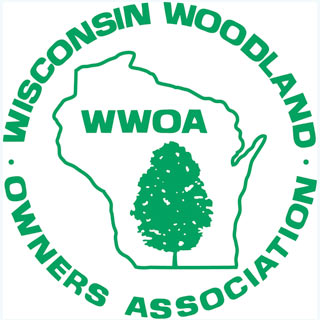Government Affairs
Your Comments needed on proposed changes to WI Forest Landowner Grant Program
The WI DNR is accepting public comments on proposed changes to the WI Forest Landowner Grant Program until June 25, 2019. Information on the proposed changes can be found at WI DNR Proposed Program Guidance page, then under Proposed program guidance open for public comment, Forestry Grants, select the link to the draft document. WWOA’s comments have been submitted to WI DNR.
Ecological Landscapes of Wisconsin
The Wisconsin DNR publication, Ecological Landscapes of Wisconsin, written for land and water conservation planners and managers, administrators, researchers, educators, students, landowners, and others interested in Wisconsin’s natural resources has been updated and released. The Ecological Landscapes of Wisconsin is a compilation of ecological, social, and economic information about Wisconsin’s 16 distinct ecological landscapes that can help identify, locate, and sustain Wisconsin’s ecological resources.
2018 Timber Tax Tips
The U.S. Forest Service has released the 2018 Tax Tips for Forest Landowners. The Federal income tax provisions that apply to timber have changed for the 2018 tax year from the December 2017 new tax legislation. To help family timber owners, foresters and their tax preparers in filing their 2018 tax returns, this bulletin provides income tax guidance that is current as of September 30, 2018. Share these with your accountant!
Proposed Forest Tax Law Handbook Update Available for Public Comment
The Division of Forestry, Tax Law Section is soliciting public comment on proposed update to the Forest Tax Law Handbook (Handbook 2450.5), Chapter 20, Harvesting on MFL. The draft is available on the Proposed DNR Program Guidance webpage and comments will be accepted through December 5, 2018. Click on the link for more information.
USDA Resumes Continuous Conservation Reserve Program Enrollment
One-Year Extension Available to Holders of Many Expiring Contracts through Continuous Signup WASHINGTON, June 1, 2018 – As part of a 33-year effort to protect sensitive lands and improve water quality and wildlife habitat on private lands, the U.S. Department of Agriculture (USDA) will resume accepting applications for the voluntary Conservation Reserve Program (CRP). Eligible farmers, ranchers, and private landowners can sign up at their local Farm Service Agency (FSA) office between June 4 and Aug. 17, 2018.
2018 Omnibus Bill Nixes DUNS and SAM Requirements for Farmers
Madison, Wis. ‒ April 23, 2018 ‒ Effectively immediately, Natural Resources Conservation Service (NRCS) financial assistance program participants will no longer need a Dun and Bradstreet Universal Number System (DUNS) number, or to register in the System for Award Management (SAM). The Consolidated Appropriations Act of 2018 (2018 Omnibus Bill), signed by President Donald Trump on March 23, eliminated these requirements. According to U.S.
2015-2016 Wisconsin Council on Forestry Biennial Report
The Wisconsin Council on Forestry Biennial Report for 2015-2016 can now be viewed. The Council is a board composed of individuals that represent all areas of forestry in Wisconsin. They advise the Governor, the Legislature, Department of Natural Resources, and other state agencies on aspects of forestry in the state.
Updated Forest Tax Rates
The Wisconsin Department of Natural Resources has released the new tax rates for use in 2018 through 2022 for land in the Managed Forest Law (MFL). These new tax rates are effective January 1, 2018. The updated MFL tax rates saw an all around decrease. Open land entered before 2005 saw a decrease of 5¢ to $0.74 per acre. Closed land entered before 2005 dropped 12¢ to $1.75 per acre.
Annual Forest Tax Law Program Harvest Tax Rates
Annually, the Department of Natural Resources (DNR), Division of Forestry Tax Law Section gathers stumpage values paid on privately-owned timber sales from lands enrolled in the Managed Forest Law and the Forest Crop Law programs throughout Wisconsin. Stumpage values are reported mainly by private-sector Cooperating Foresters with additional values reported by DNR Foresters. The stumpage values gathered indicate the value of standing timber on those specific stands at time of harvest.
Governor announces location of WI DNR State Forestry Headquarters
MADISON – Governor Scott Walker announced today that the Wisconsin Department of Natural Resources state forestry headquarters will be relocating to the DNR Rhinelander Service Center by the first of next year.
